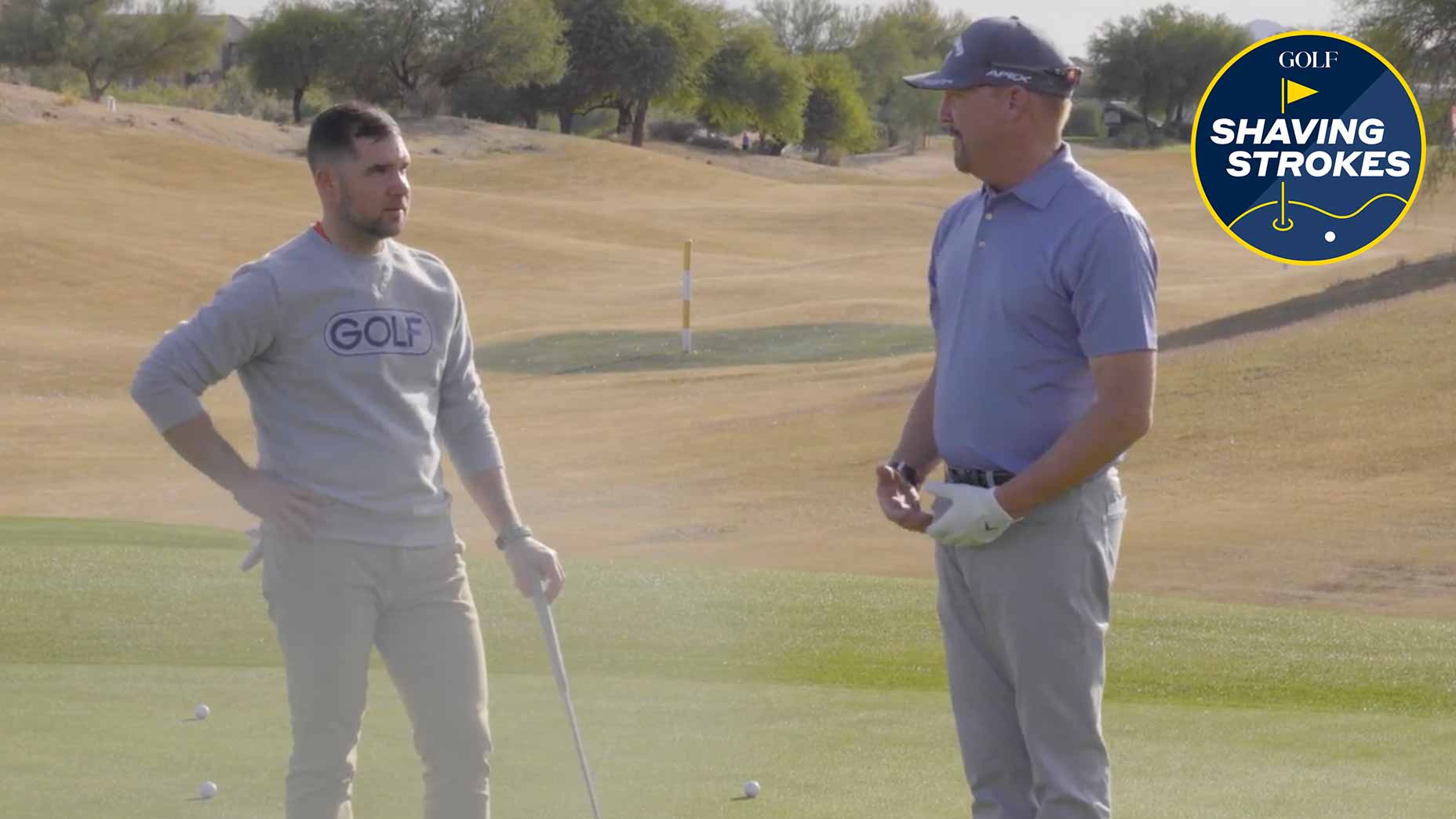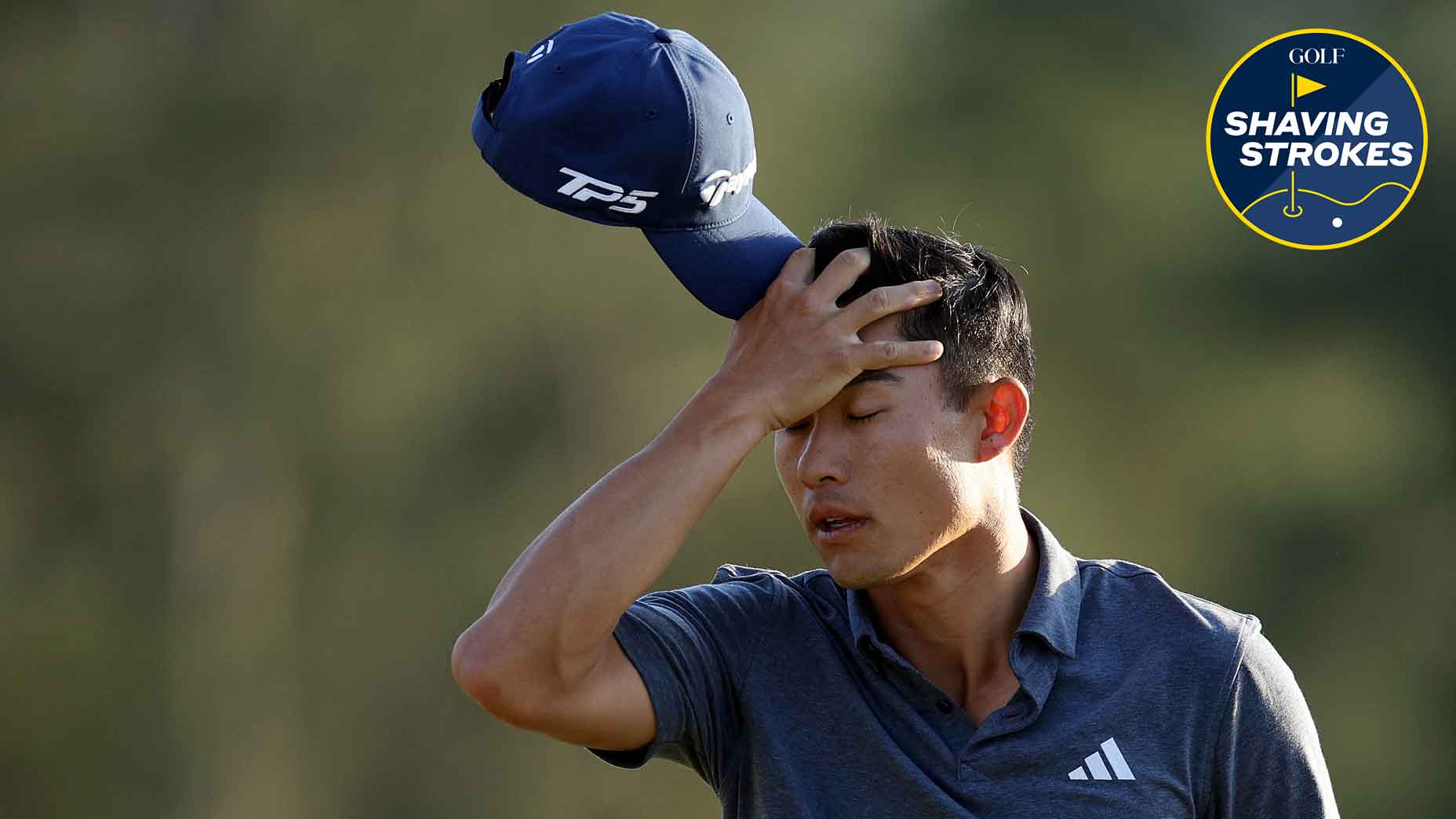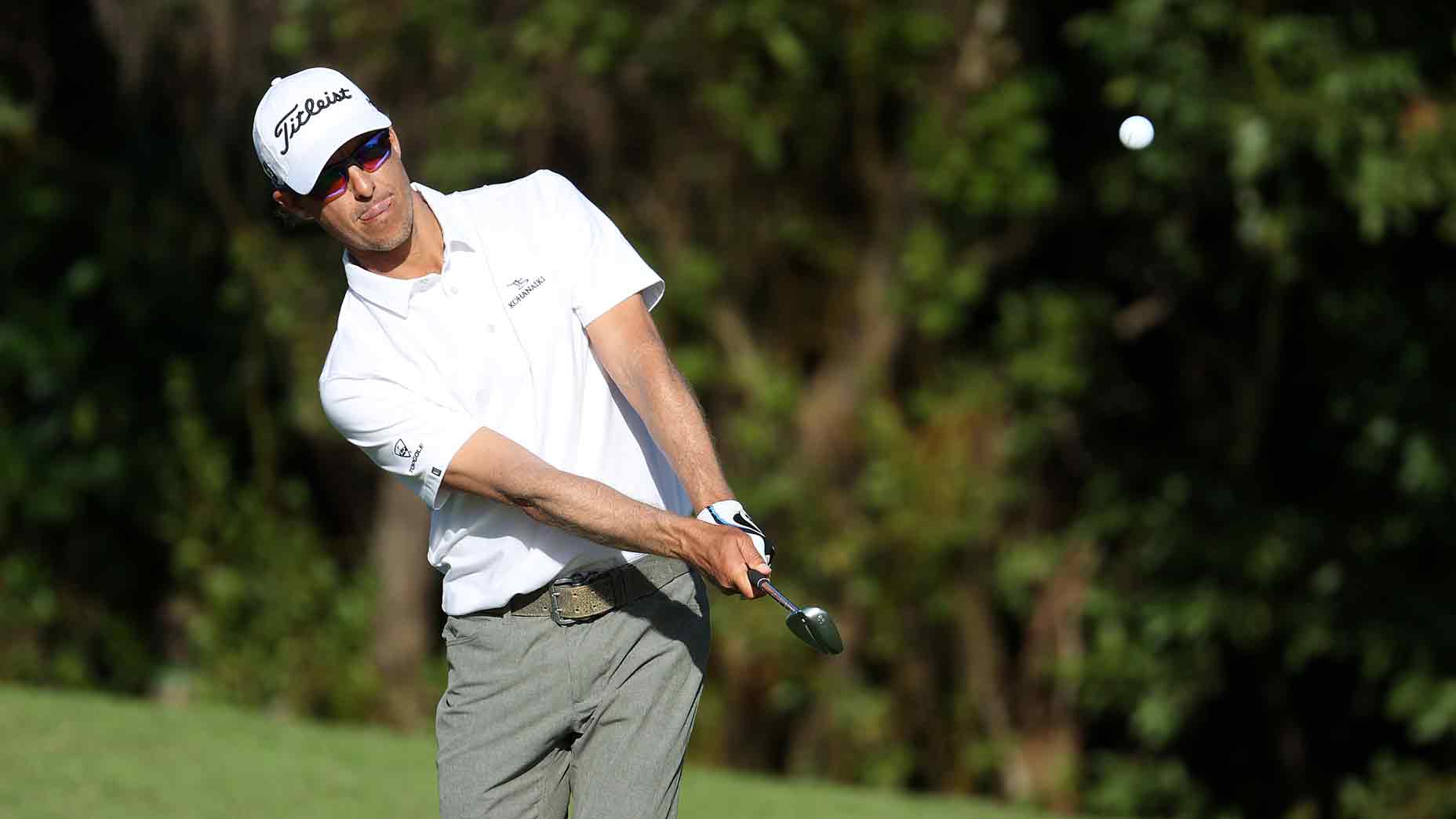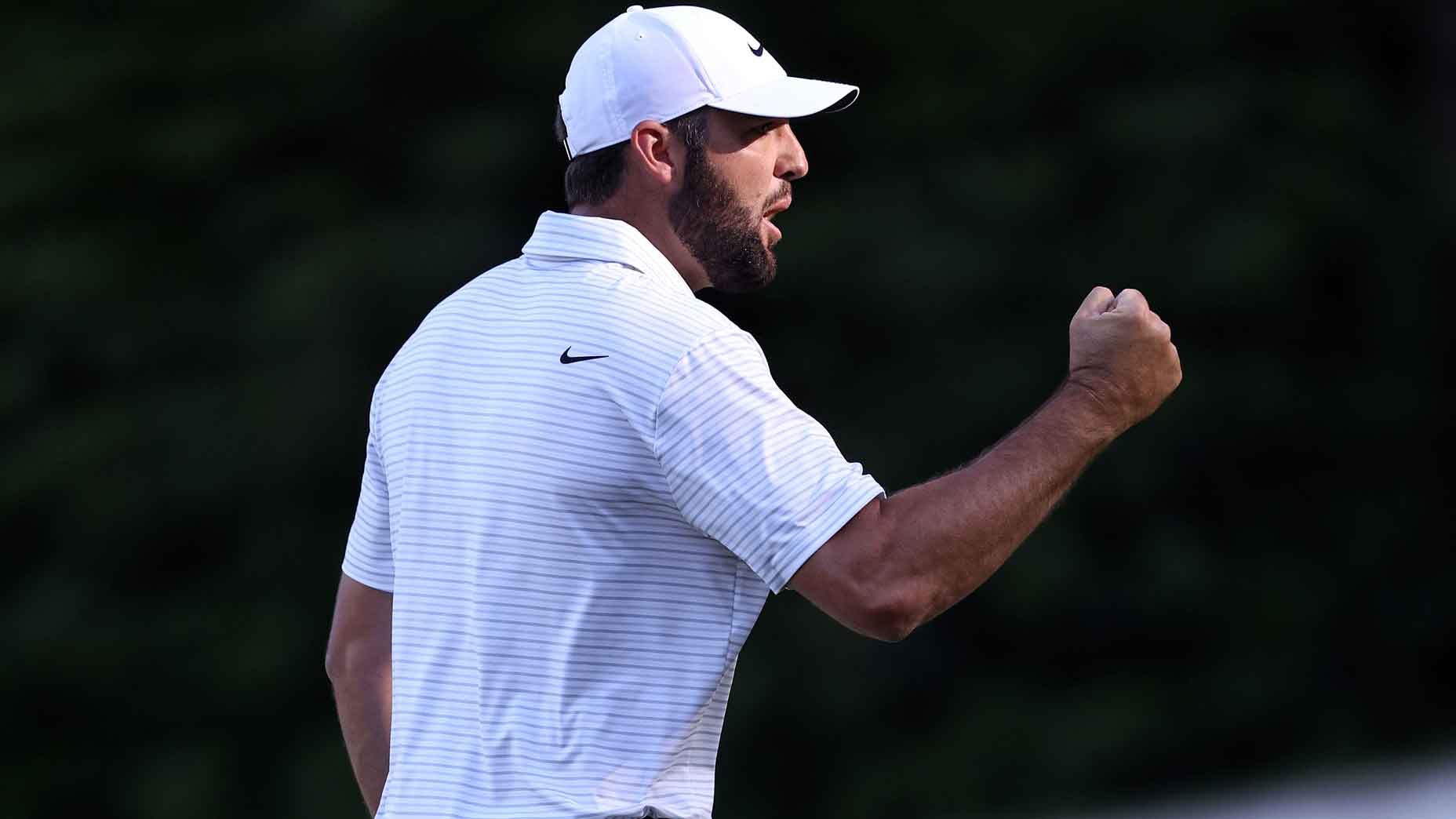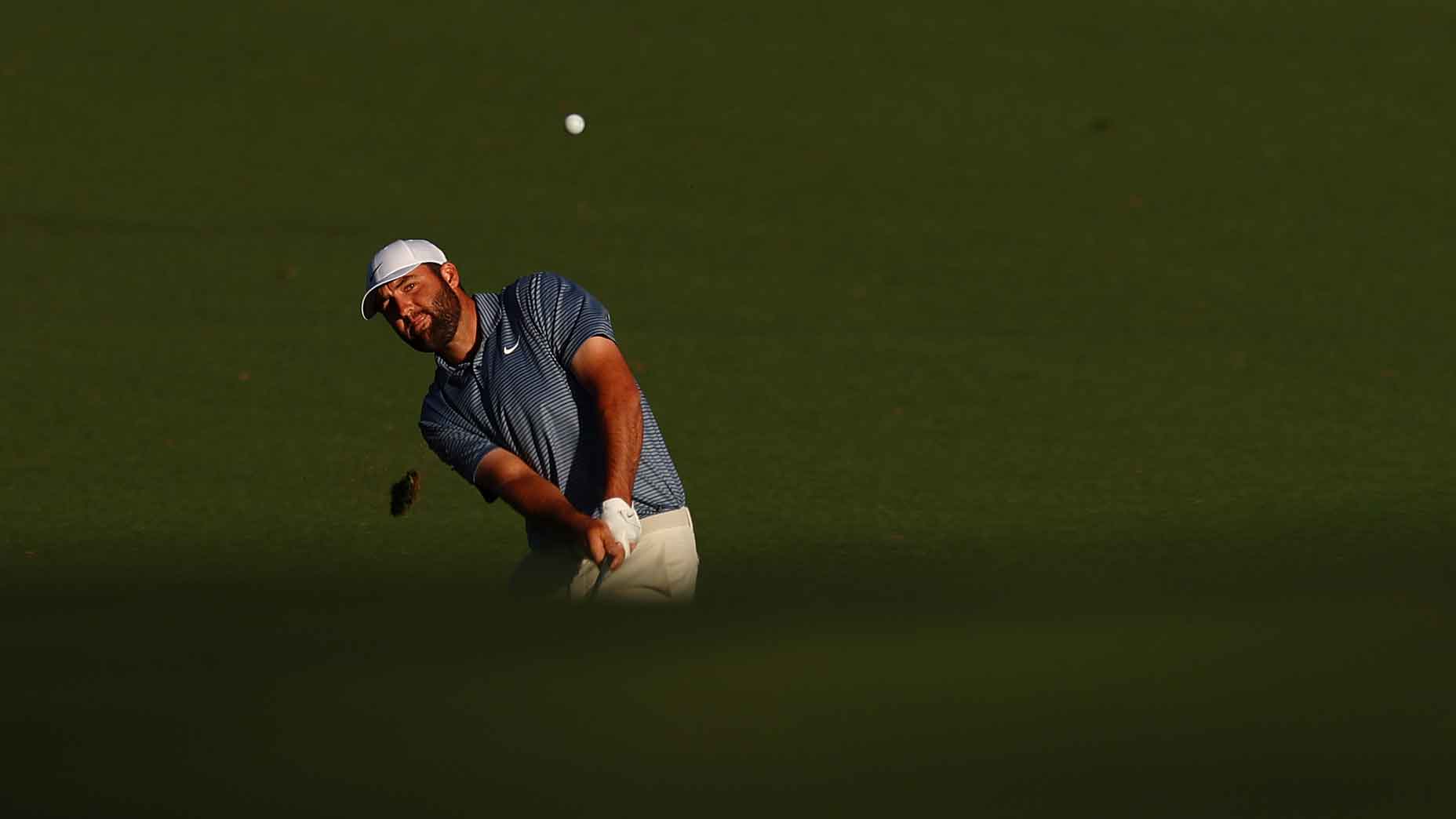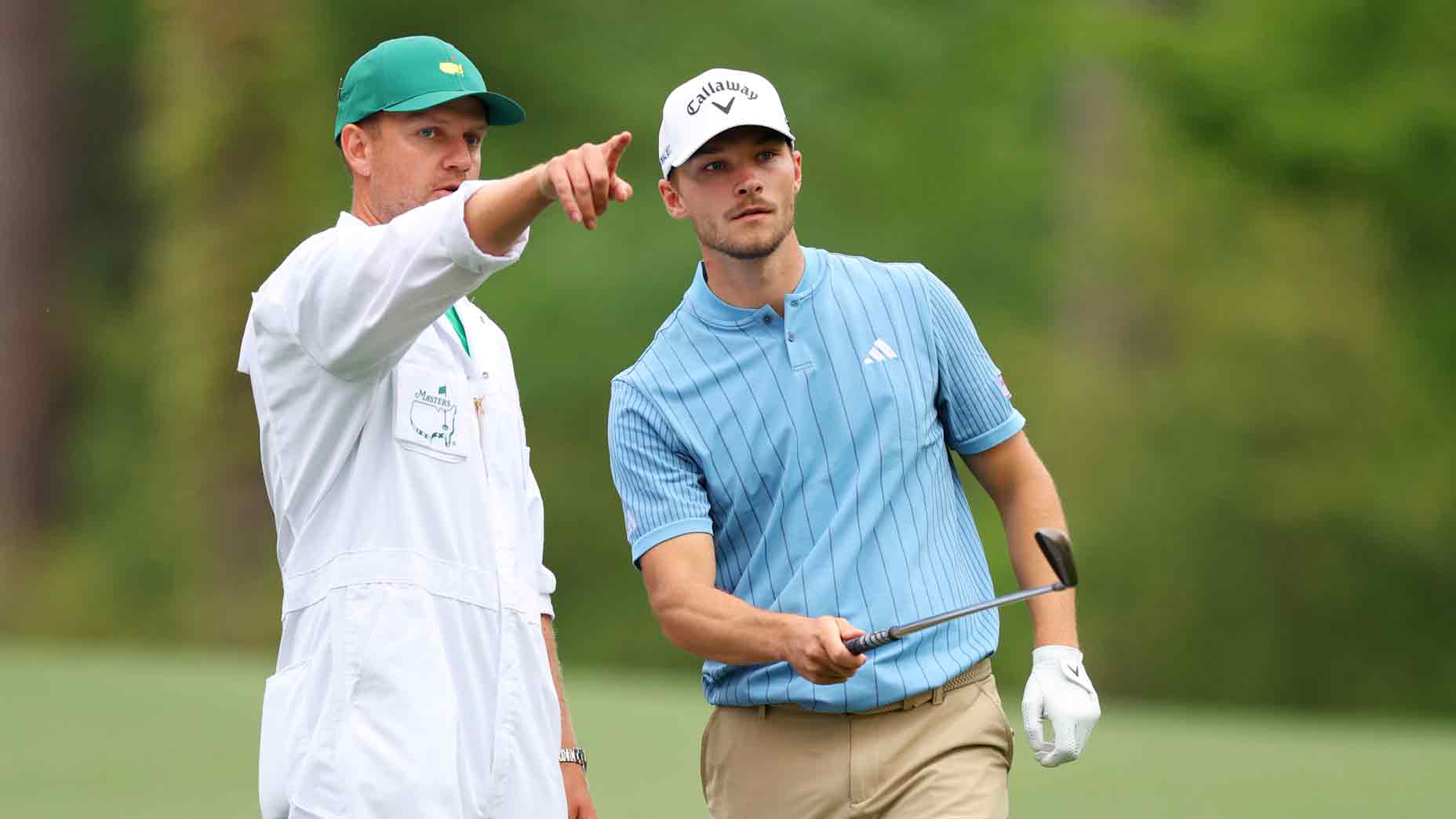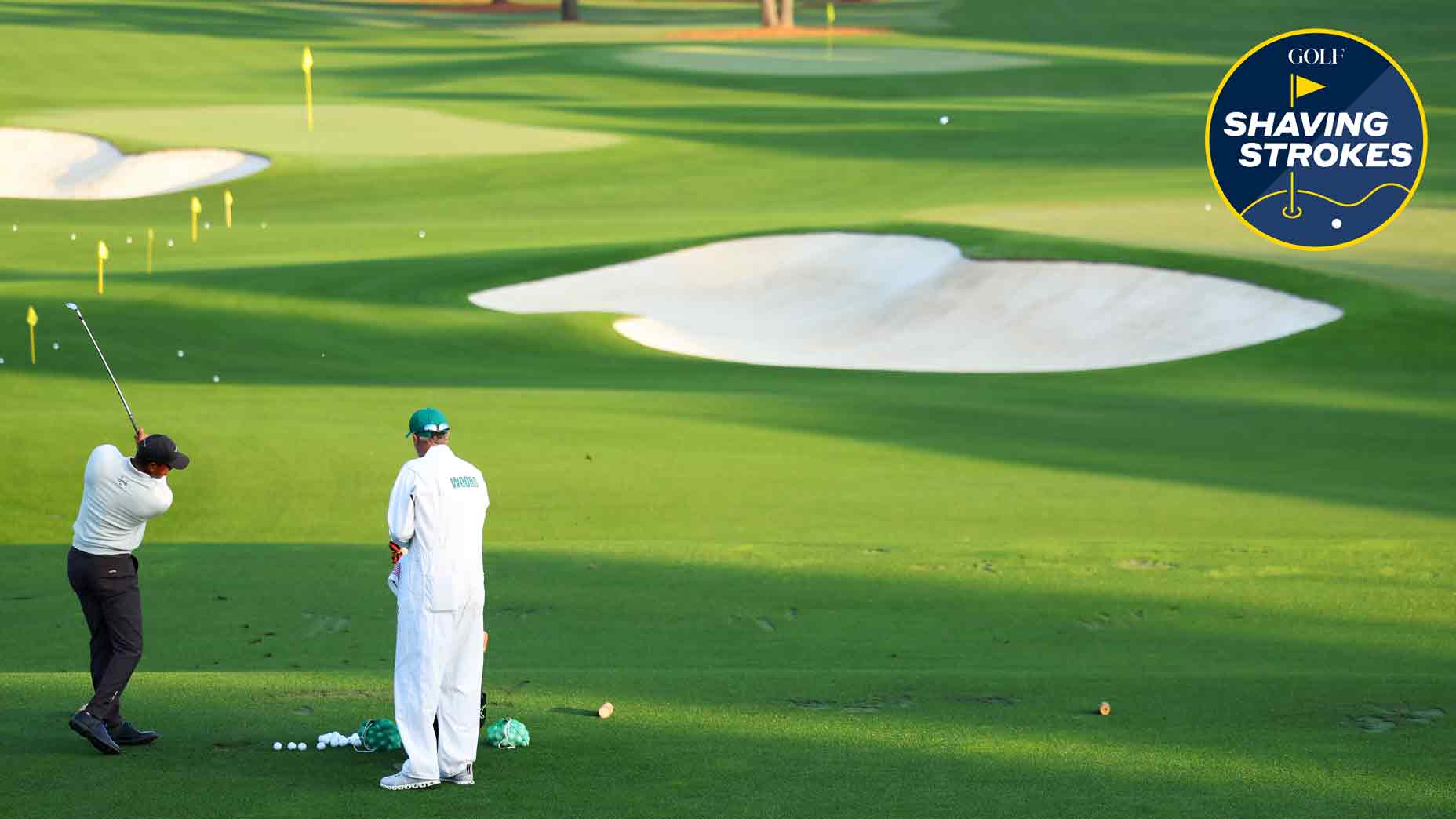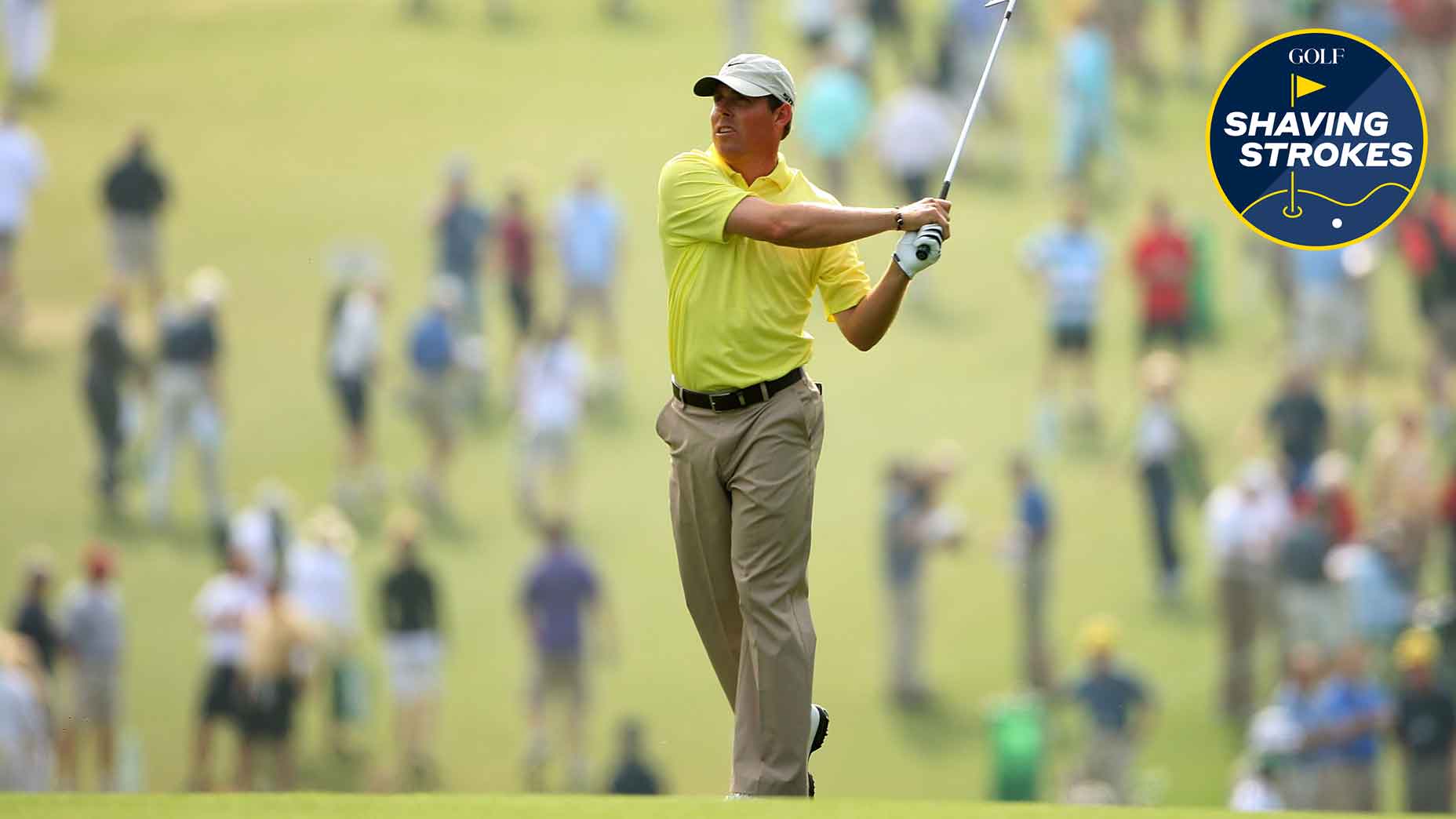Here’s how to nail your aim and alignment before every shot
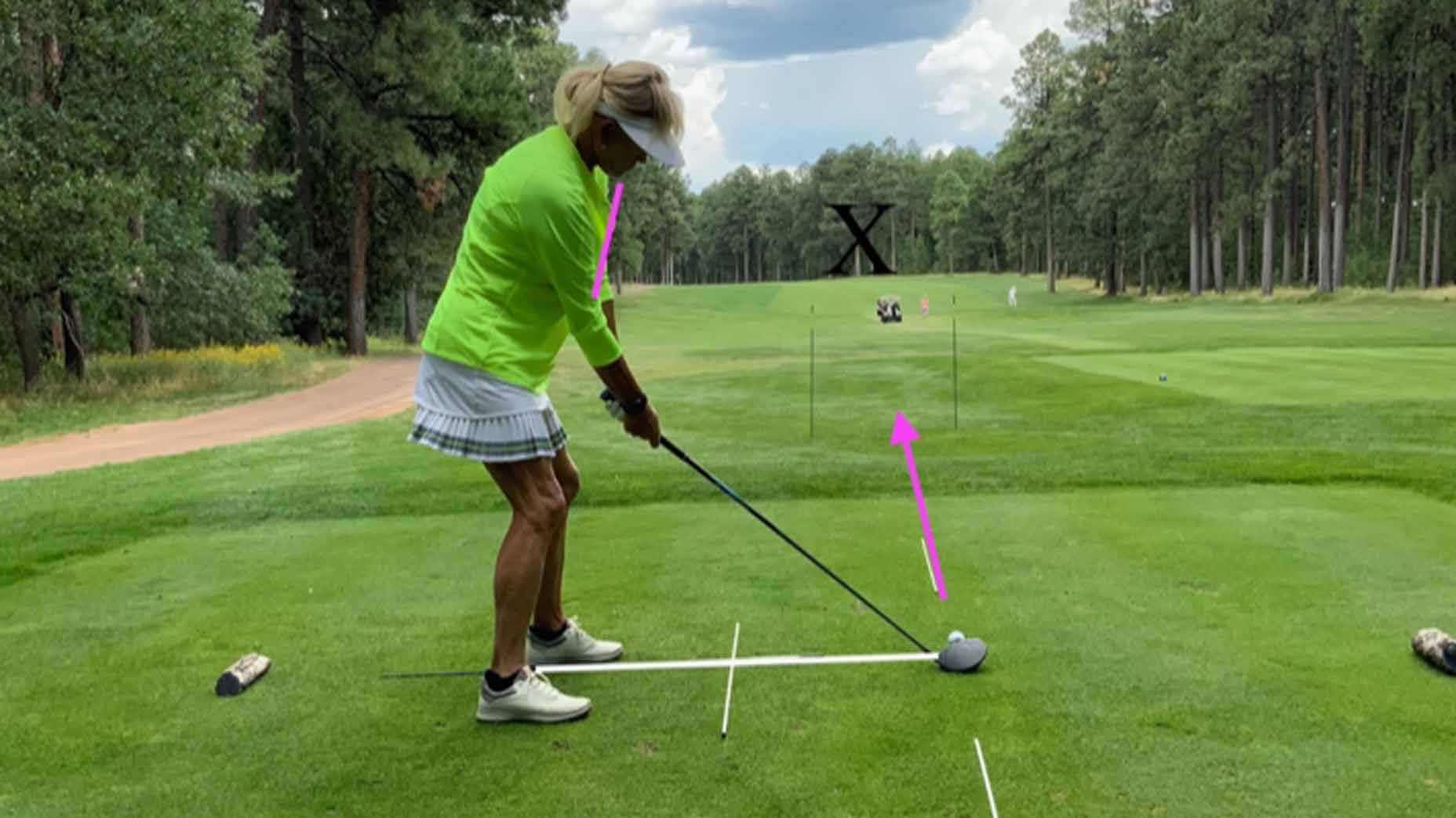
Aim, alignment and ball position all work together to help you get the ball to your intended target.
Tina Tombs
Your setup can be a huge confidence builder or a source of extreme frustration, but there are two fundamentals that will help you: aim and alignment. If you can dial in your aim and alignment before you hit every shot, your performance will improve and you’ll be well on your way to a more consistent game. Here’s how to do it.
The first thing to keep in mind is that aim and alignment go together like peanut butter and jelly. We first aim the clubface to the target, and then we align our body parallel left of the target (for a right-handed golfer) or parallel right of the target (for a left-handed golfer) to hit a traditional straight shot.
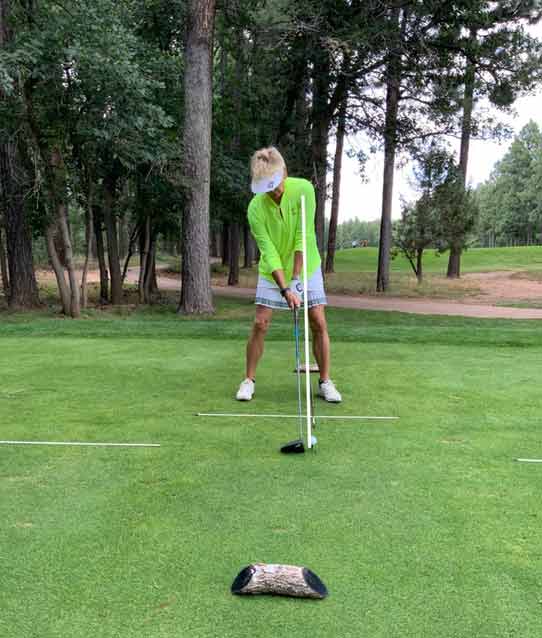
Aim represents the clubface’s relationship to the target while alignment is your body’s setup parallel to the target line.
In the photo on the left, I have set up a practice station with two alignment sticks on the target line using a driver. One is in front of the ball and one behind the golf ball. The other alignment stick is on the ground parallel to the target line for my feet and body to refer to and align parallel to that stick, and the fourth alignment stick is used to assist me with the correct ball position.
Remember: your ball position will affect both your aim and alignment. With a driver, your ball position should be inside the target-side armpit and inside heel of the target-side foot.
If the ball position is correct when we set the club down and raise it to waist high, the club will point straight ahead — and that’s perfect!
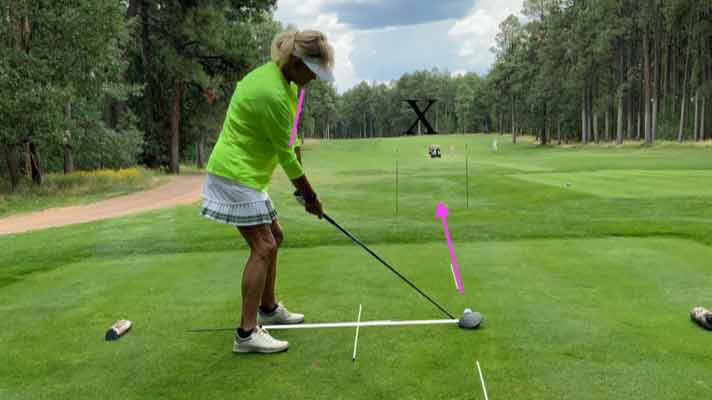
In the picture above, you can see that my club face is pointing in line with the arrow down the white alignment stick, while my feet, hips and upper body are parallel to the target line. I also put stakes out in front of my start lines so that I can visually see the start line of my tee shot to my intended target. I allow my eyes to track the line from the club face and ball to my target, which is in the distance toward the “X.”
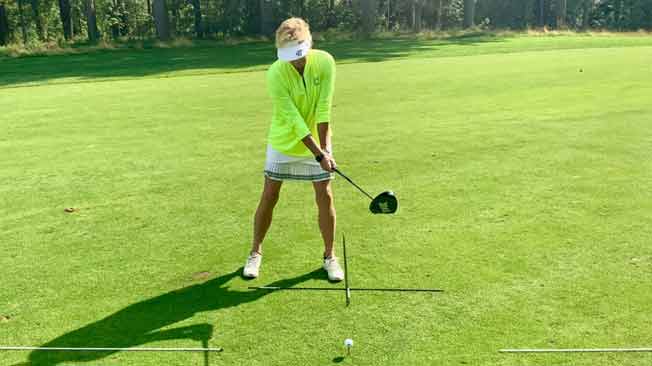
Note: If you raise the club to waist high and the club shaft points in front of you (see photo above), the ball position is too far forward in your stance and not in line with your front armpit and inside your left heel.
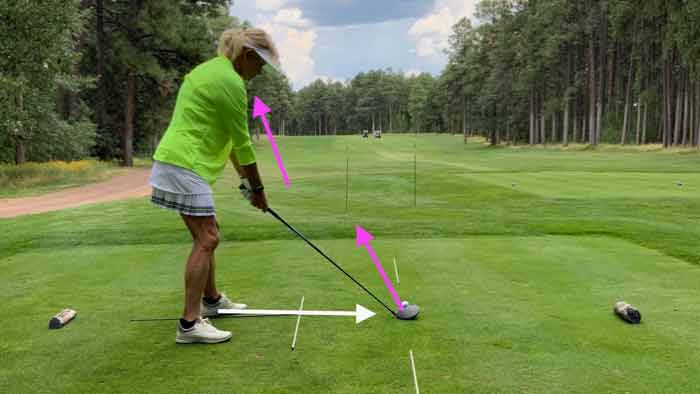
It’s also important to keep in mind that when you are playing the ball position forward, your shoulders will tend to get open (aimed left of the target for a right-handed player or right of the target for a left-handed golfer), which can cause an out-to-in swing and disrupt your aim and alignment. (See photo above.)

To check if the ball is too far back in your stance, raise the club to waist high. If the club points back behind you, the ball position is indeed too far back. (See photo at left.)
Playing to ball too far back will cause your shoulders to close and skew your aim and alignment to the right of the target for a right-handed golfer and left for the left-handed golfer, while producing an in-to-out golf swing.
So remember, when setting up to your intended shot, aim the face of the club to your target, address the ball athletically and pay attention to your ball position. When the ball is in the right position, it will always assist you with your aim and alignment. And once you master your setup, you’ll have a lot more confidence to hit your target and shoot lower scores.


